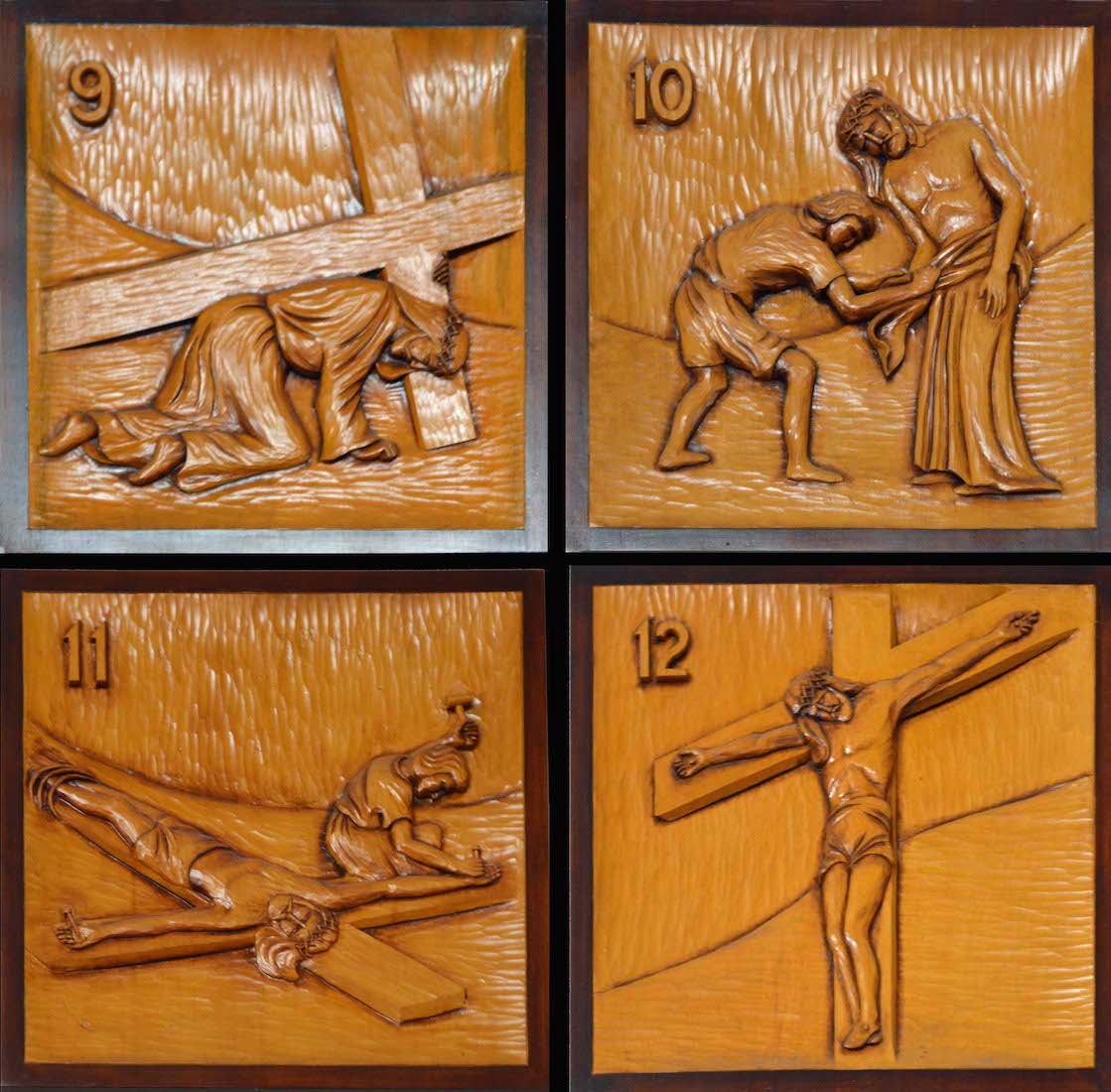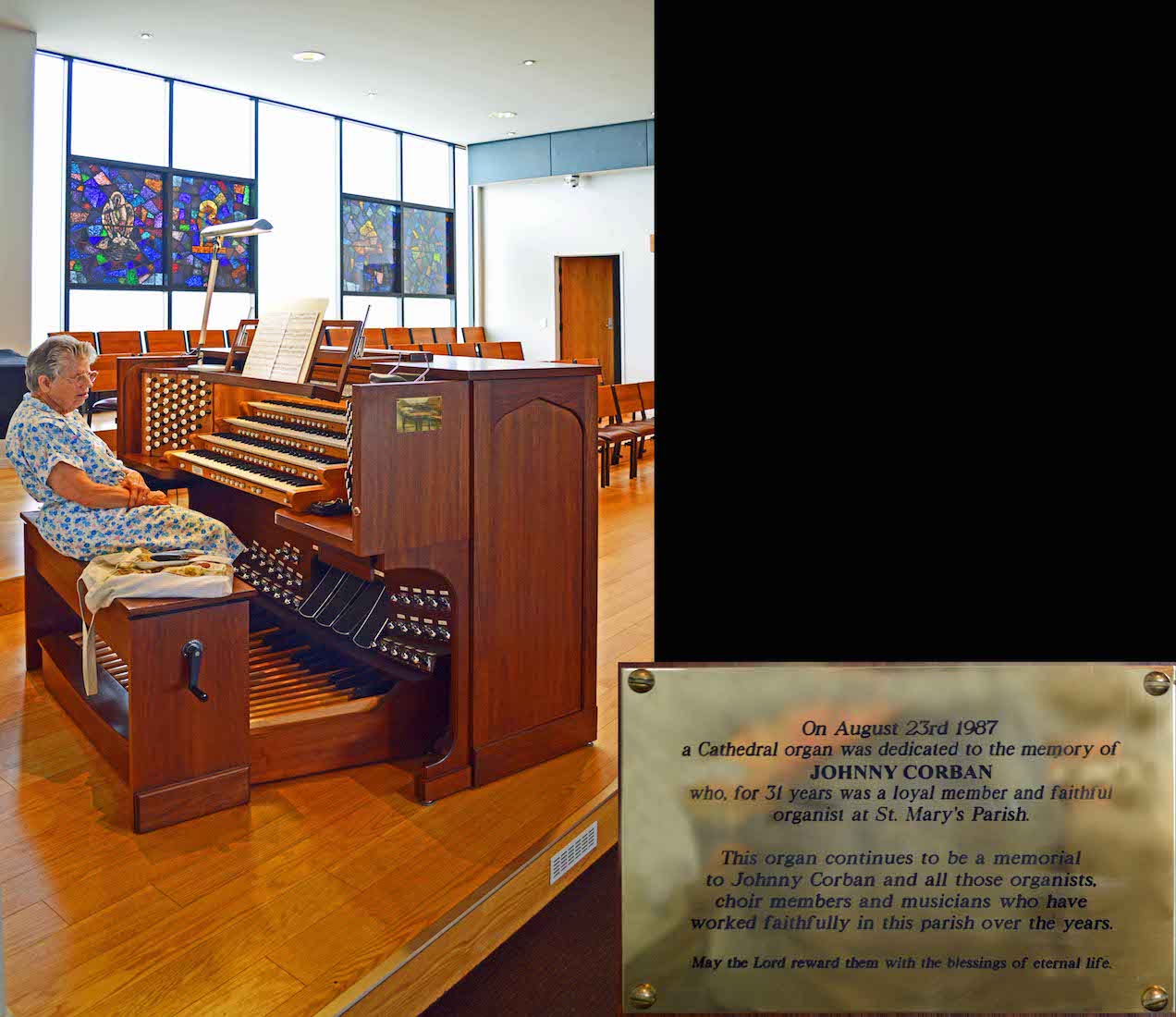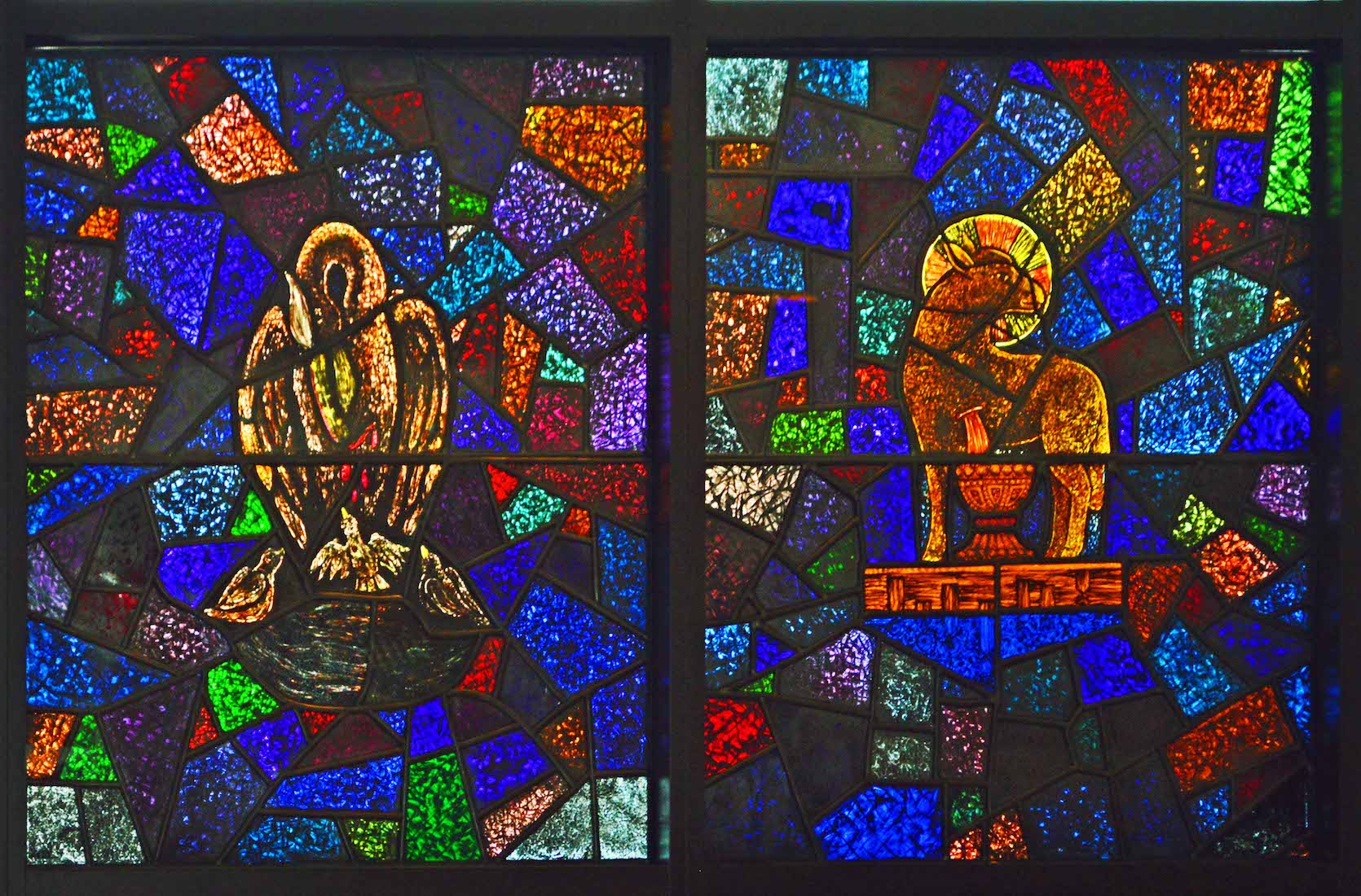
The Cathedral shop is well stocked with an abundance of good materials relating to the Cathedral and living the Christian life. PLAN
23. FONT
The font design incorporates gently flowing water, and the Holy Spirit, in the form of a marble dove, is carved into the bowl. The bowl is big enough for an adult to stand in or kneel for baptism, and babies are held over it while the water is poured on them.
24. ANGELS
Looking back past the font we see the main doors with their sandblasted images of the archangels Michael and Gabriel, keeping watch over the font.
25. BAPTISMAL ICON
The Icon of the Baptism of our Lord was also designed by Michael Pervan. It shows the Holy Spirit descending upon Jesus as a dove, as he is baptied by John the Baptist. Ministering angels stand at right. Baptism carries symbolism of death and resurrection, and these are depicted here.
26. HOLY OILS
The cabinet below the Baptismal Icon holds holy oils in ornate containers. The oils are Sacred Chrism, Oil of the Sick, and Oil of Catechumens.
27. OILS AND CANDLE
On the wall of the baptistry is a plaque outlining the uses of the various oils. Opposite stands the Paschal candle, symbolizing the Light of the World, and of particular significance around Easter time.
29. SOUTH NAVE
Turning to the South, at right we observe some of the Stations of the Cross. At centre is the choir area with organ, and some stained glass window panels. Sanctuary items can be seen at left.
30. NORTH NAVE
In the opposite direction, we have sanctuary items at right, and then access to two chapels. At centre is an etched glass window wall, and an adjacent Reconciliation Room with dark stained glass panels. Then at left are some more Stations of the Cross.
31. SOUTH WEST ASPECT
We move around the inside of the Cathedral, walking in an anticlockwise direction. Our attention is first drawn to the Stations of the Cross.
32. STATIONS OF THE CROSS
Praying the Way of the Cross as a devotion started in Jerusalem, with Christian pilgrims tracing Jesus’ journey to Calvary. Later, sets of 14 Stations of the Cross were installed in churches. These were made for the 1975 church, carved in rimu by Michael Hempton, Christchurch.
33. SOUTH ASPECT
We observe here the Choir Wing, with seating for the choir, and the organ. The Cathedral’s acoustics are enhanced by double glazing of all the windows, and special ceiling tiles that give a good reverberation time for speaking and music.
34. ORGAN
The organ was made in the United States by the Allen Organ Co., specialists in electronic organs. It has a 4 manual AGO console, 18 speakers, and faithful sound reproduction. It is dedicated to the memory of Johnny Corban, loyal member and faithful organist at St Mary’s Parish for 31 years.
35. SOUTH WINDOWS I
These windows were made for the earlier Church of Our Lady of the Rosary in the 1950s by artist Martin Rosterburg, and have been moved several times. The window on the left shows the pelican, a symbol of Christ’s love, and, at right, the Lamb of the Apocalypse.
36. SOUTH WINDOWS II
These next two windows at right show the loaves and fishes – an image of the first time Jesus fed the people, and the grapes and wheat – elements of the Eucharist. The central clear panel of the South windows has a sandblasted cross and crown of thorns.
38. LECTERN AND DISPLAY
The lectern is carved from Coromandel granite, and bears the words ‘This is the Word of the Lord’. The adjacent grey and purple display is presumably for the Easter season.
39. COATS OF ARMS
At right is the Hamilton Diocese coat of arms. It contains many symbols! At left is the St Mary’s Parish Coat of Arms. Mary is surrounded by 50 pearls set in NZ paua shell.
40. CHAIR AND CATHEDRA
The celebrant’s chair (left) is placed closer to the congregation. The Bishop’s chair, or cathedra, (right) sits in its correct liturgical position directly under the crucifix. This church is called a cathedral because the Bishop’s chair is located here.



















